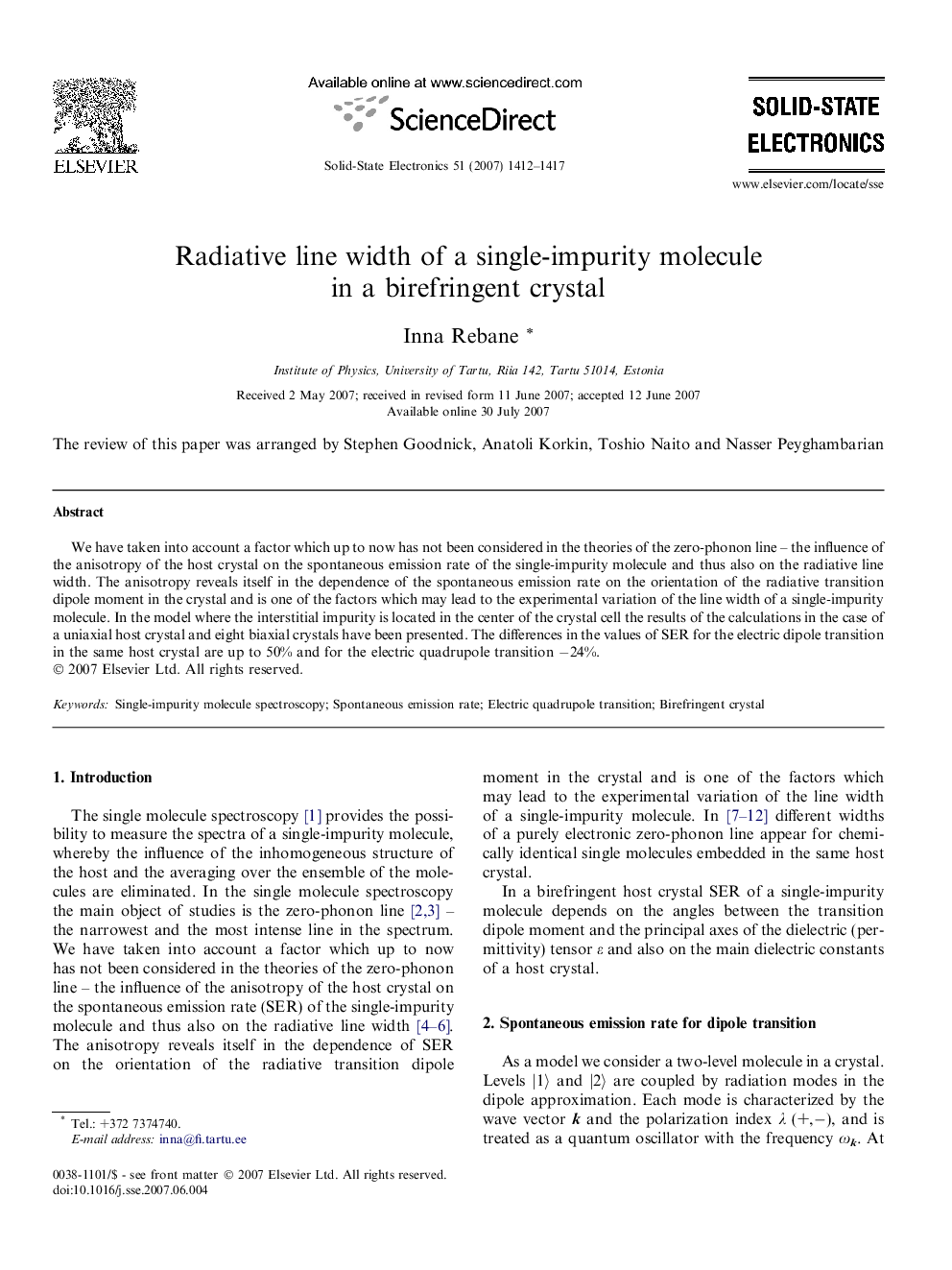| Article ID | Journal | Published Year | Pages | File Type |
|---|---|---|---|---|
| 749393 | Solid-State Electronics | 2007 | 6 Pages |
Abstract
We have taken into account a factor which up to now has not been considered in the theories of the zero-phonon line - the influence of the anisotropy of the host crystal on the spontaneous emission rate of the single-impurity molecule and thus also on the radiative line width. The anisotropy reveals itself in the dependence of the spontaneous emission rate on the orientation of the radiative transition dipole moment in the crystal and is one of the factors which may lead to the experimental variation of the line width of a single-impurity molecule. In the model where the interstitial impurity is located in the center of the crystal cell the results of the calculations in the case of a uniaxial host crystal and eight biaxial crystals have been presented. The differences in the values of SER for the electric dipole transition in the same host crystal are up to 50% and for the electric quadrupole transition â24%.
Related Topics
Physical Sciences and Engineering
Engineering
Electrical and Electronic Engineering
Authors
Inna Rebane,
